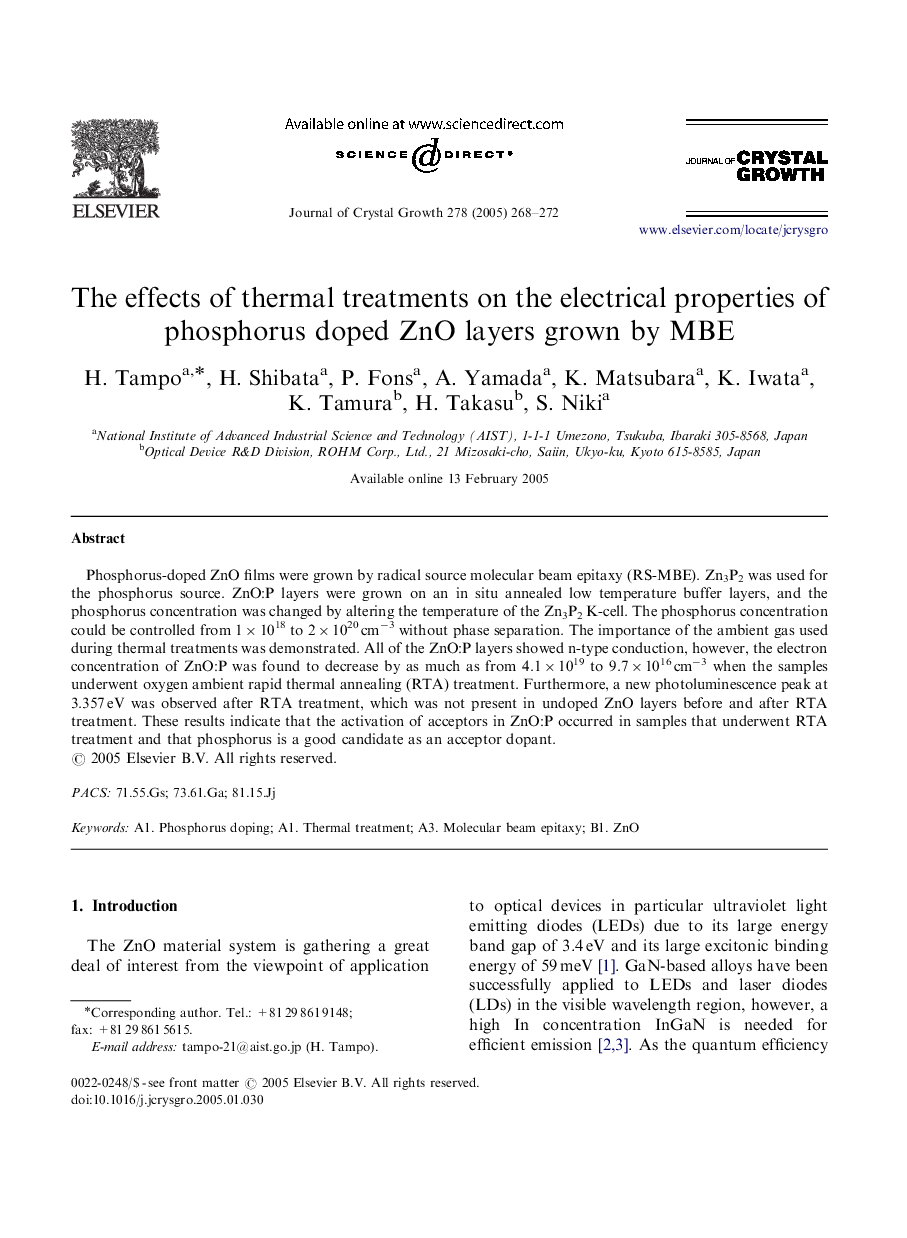| Article ID | Journal | Published Year | Pages | File Type |
|---|---|---|---|---|
| 9829827 | Journal of Crystal Growth | 2005 | 5 Pages |
Abstract
Phosphorus-doped ZnO films were grown by radical source molecular beam epitaxy (RS-MBE). Zn3P2 was used for the phosphorus source. ZnO:P layers were grown on an in situ annealed low temperature buffer layers, and the phosphorus concentration was changed by altering the temperature of the Zn3P2 K-cell. The phosphorus concentration could be controlled from 1Ã1018 to 2Ã1020Â cmâ3 without phase separation. The importance of the ambient gas used during thermal treatments was demonstrated. All of the ZnO:P layers showed n-type conduction, however, the electron concentration of ZnO:P was found to decrease by as much as from 4.1Ã1019 to 9.7Ã1016Â cmâ3 when the samples underwent oxygen ambient rapid thermal annealing (RTA) treatment. Furthermore, a new photoluminescence peak at 3.357Â eV was observed after RTA treatment, which was not present in undoped ZnO layers before and after RTA treatment. These results indicate that the activation of acceptors in ZnO:P occurred in samples that underwent RTA treatment and that phosphorus is a good candidate as an acceptor dopant.
Related Topics
Physical Sciences and Engineering
Physics and Astronomy
Condensed Matter Physics
Authors
H. Tampo, H. Shibata, P. Fons, A. Yamada, K. Matsubara, K. Iwata, K. Tamura, H. Takasu, S. Niki,
